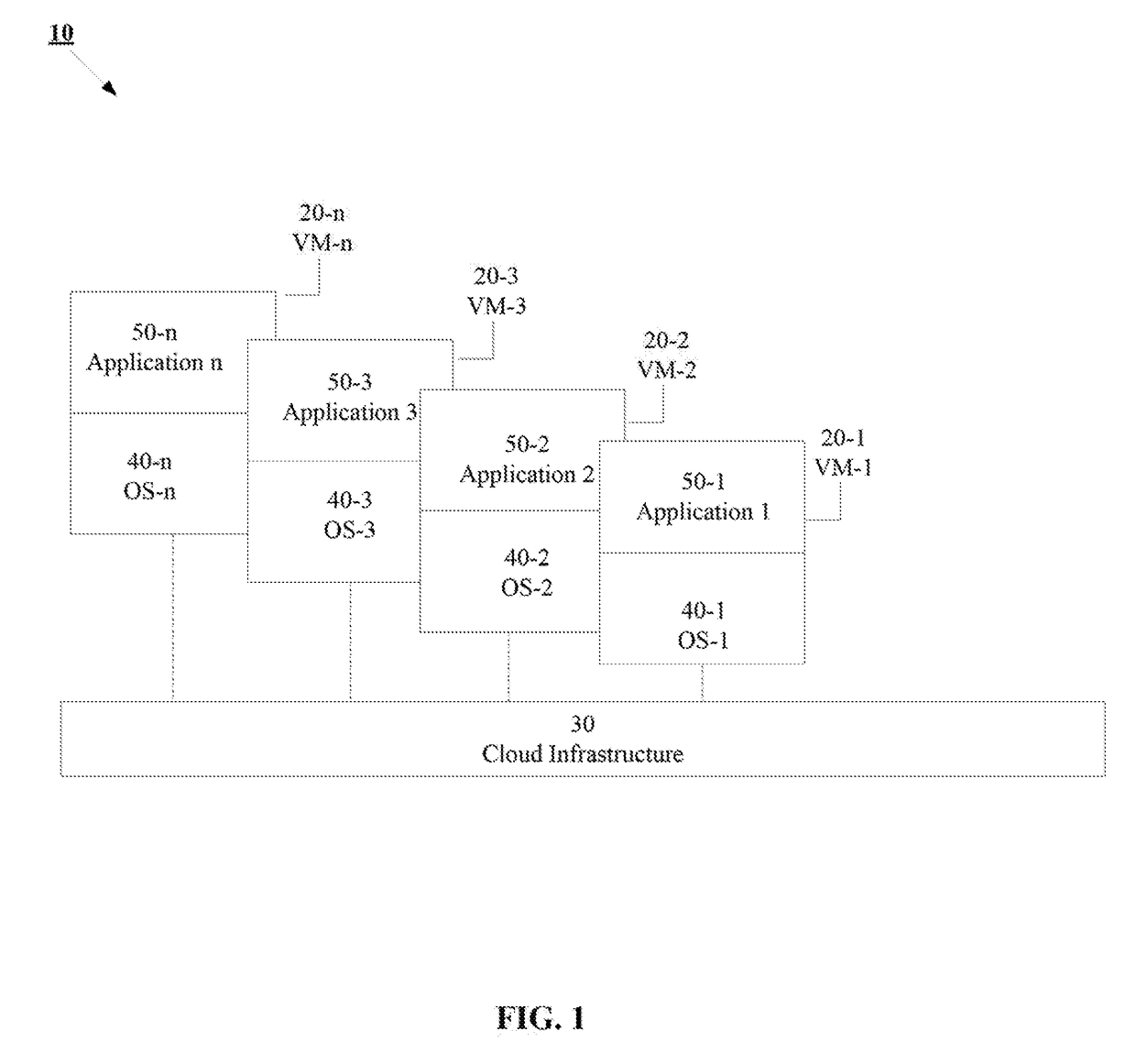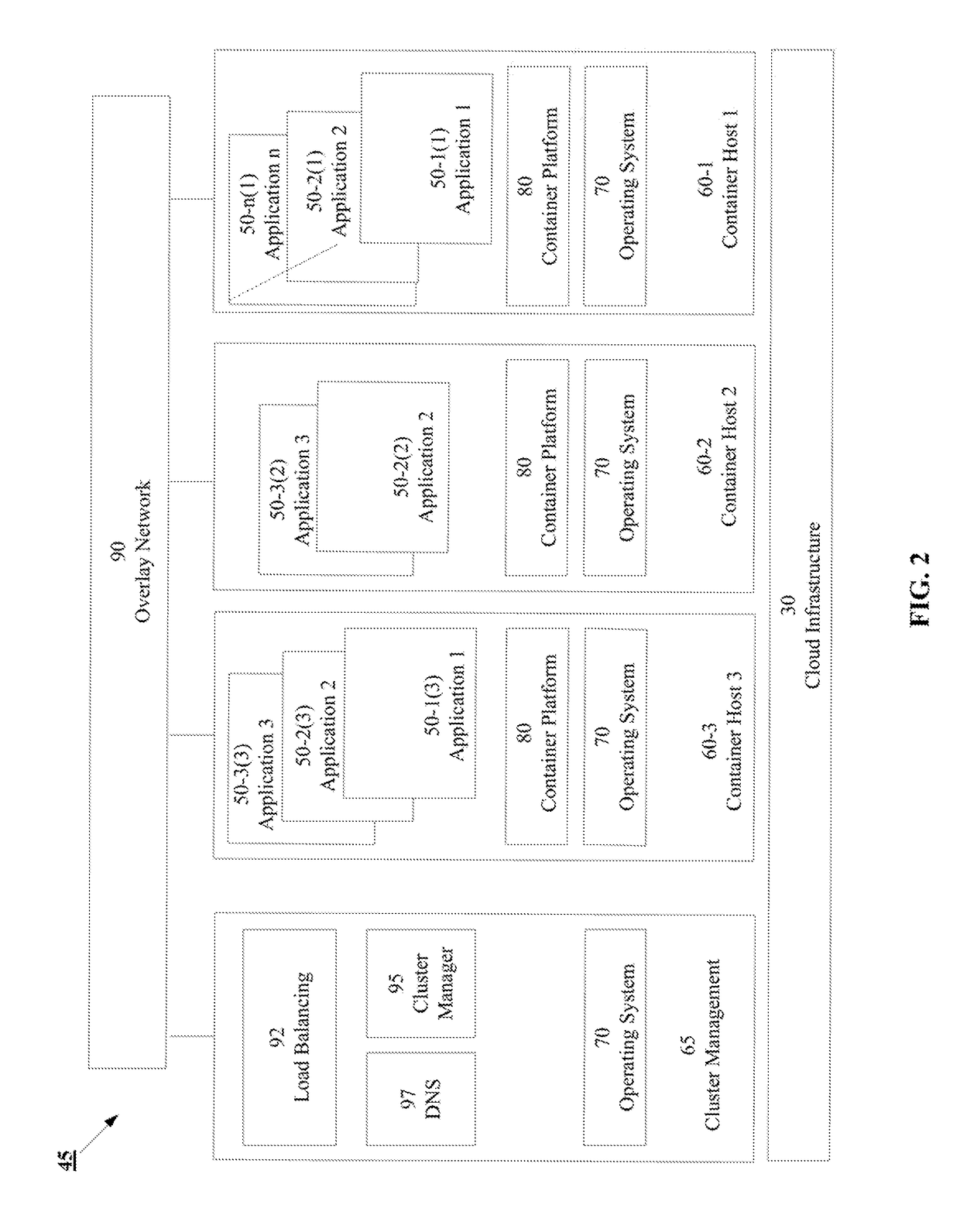Apparatus, systems and methods for container based service deployment
a container and service technology, applied in the field of distributed computing, can solve the problems of duplicate effort, failure of the entire software system that the application containers constitute, and the limitation of the resources of the host,
- Summary
- Abstract
- Description
- Claims
- Application Information
AI Technical Summary
Benefits of technology
Problems solved by technology
Method used
Image
Examples
Embodiment Construction
[0030]In accordance with embodiments disclosed herein, apparatus, systems, and methods to facilitate distributed application orchestration and deployment of cloud-based applications are presented.
[0031]The performance of computing applications may often be increased by distributing the computational workload across a networked cluster of computers. A physical networked cluster of computers with attendant software facilitating virtualization is often referred to as a “cloud” or “cloud infrastructure” or simply an infrastructure. Cloud computing facilitates on-demand access to resources, which may be rapidly scaled up or down in proportion to user requirements. The software permits the underlying physical hardware associated with clouds, which can include servers, memory, storage, and network resources, to be viewed as virtualized units. These virtualized units represent some fraction of the underlying computing hardware or resources supported by the cloud infrastructure. Therefore, f...
PUM
 Login to View More
Login to View More Abstract
Description
Claims
Application Information
 Login to View More
Login to View More - R&D
- Intellectual Property
- Life Sciences
- Materials
- Tech Scout
- Unparalleled Data Quality
- Higher Quality Content
- 60% Fewer Hallucinations
Browse by: Latest US Patents, China's latest patents, Technical Efficacy Thesaurus, Application Domain, Technology Topic, Popular Technical Reports.
© 2025 PatSnap. All rights reserved.Legal|Privacy policy|Modern Slavery Act Transparency Statement|Sitemap|About US| Contact US: help@patsnap.com



